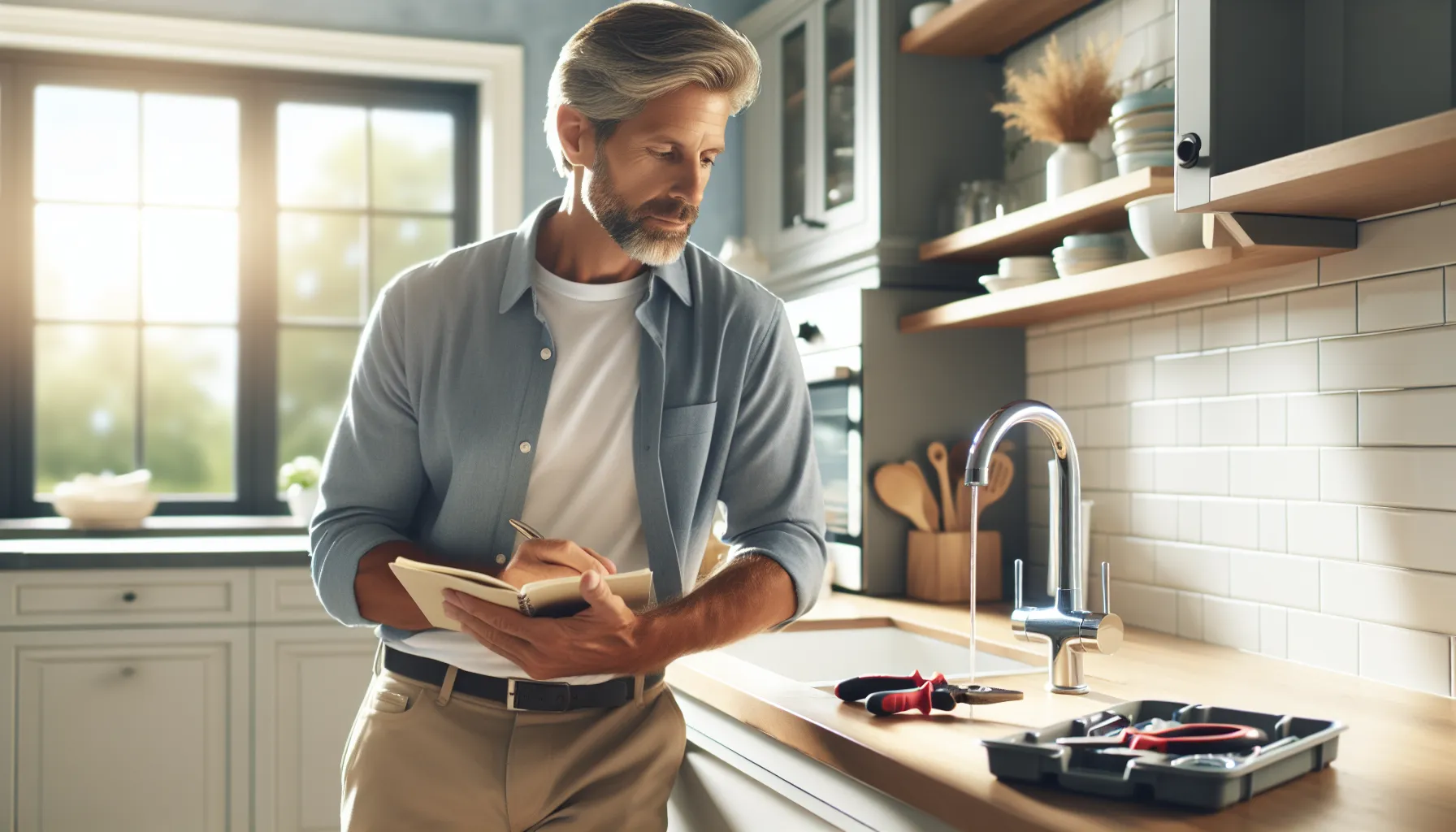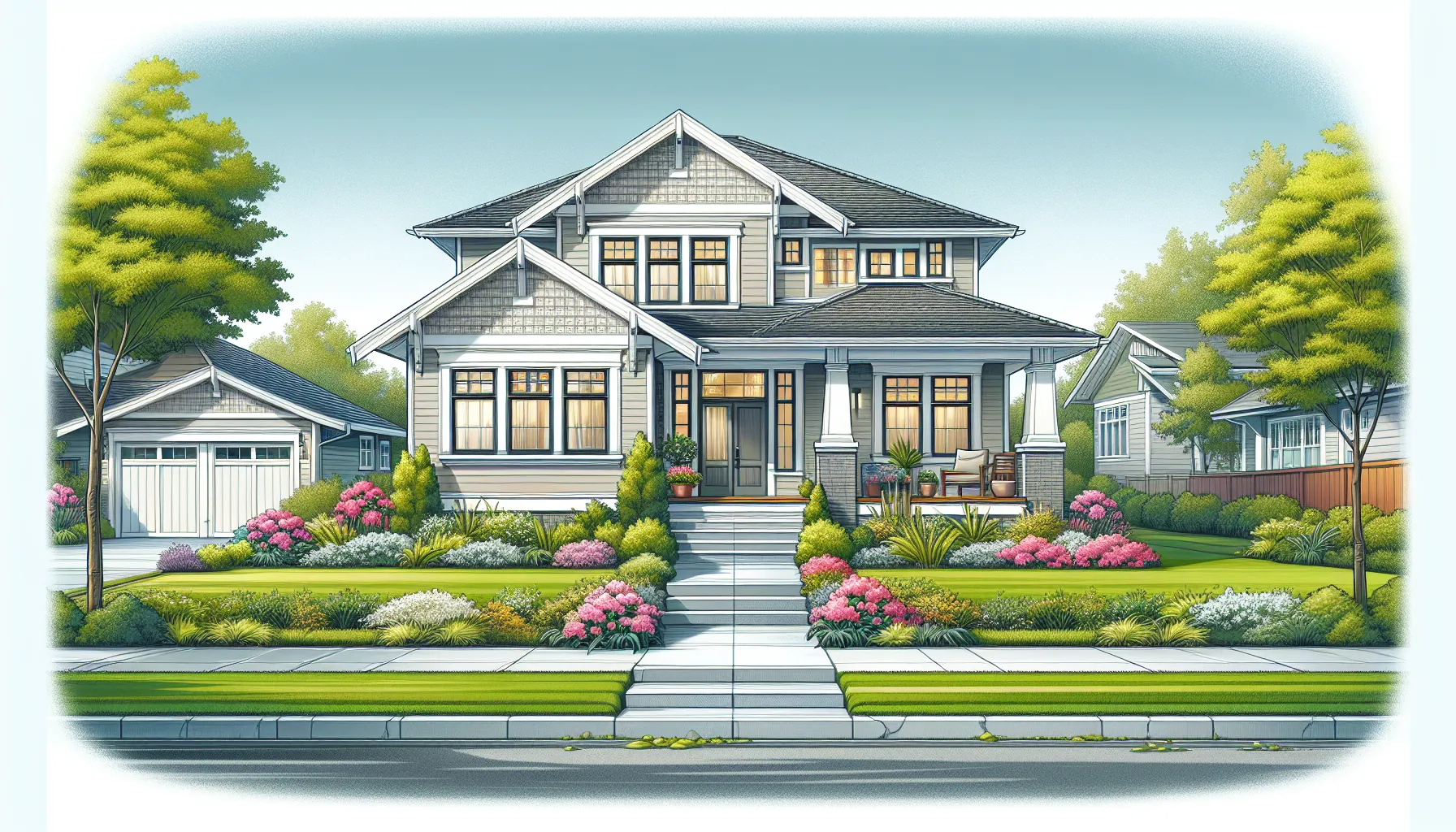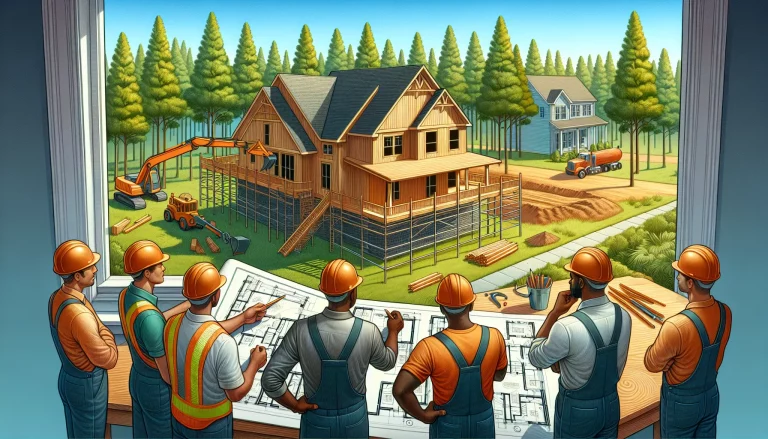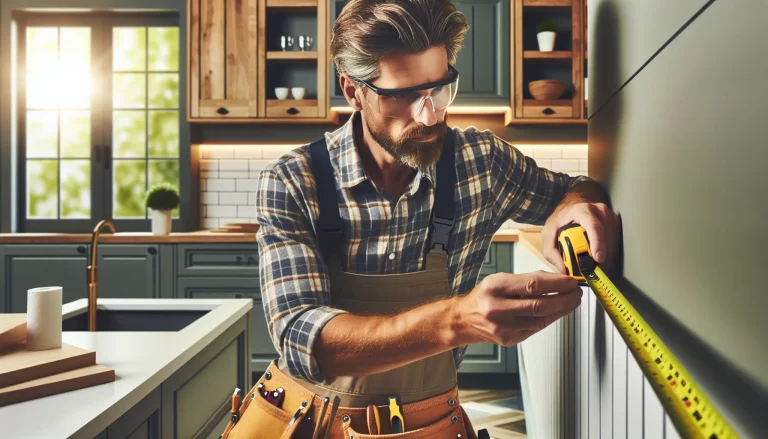Key Takeaways
- Prioritize Essential Repairs: Focus on major systems like HVAC, plumbing, and electrical rather than cosmetic fixes to ensure buyer confidence and potential ROI.
- Avoid Cosmetic Upgrades: Cosmetic changes, such as painting or new hardware, often do not offer substantial returns; buyers prefer to personalize their space.
- Leave Old Floor Coverings and Aging Appliances As-Is: Many buyers overlook flooring conditions or prefer negotiations for appliance upgrades instead of upfront replacements.
- Limit Landscaping Efforts: Simple maintenance like mowing and pruning is often sufficient; extensive landscaping projects may not significantly impact buyer interest.
- Refrain from Minor Repairs: Small issues (like squeaky doors or leaks) can be left for buyers to address or negotiate during inspections; transparency can enhance trust.
- Understand Buyer Preferences: Buyers often want clean, well-maintained homes; effective staging and showcasing functionality can attract offers without unnecessary expense.
Selling a house can feel overwhelming, especially when we start thinking about all the repairs we should tackle. But what if we told you that not everything needs fixing before we put our home on the market? In fact, there are certain things we shouldn’t waste our time or money on.
In this article, we’ll explore seven common home repairs that aren’t worth our effort when selling. By focusing on the right areas, we can save ourselves stress and cash while still attracting potential buyers. Let’s dive into what we can leave as-is to make our selling journey smoother and more profitable.
Don’t Fix These 7 Things When Selling Your House
When preparing to sell our house, prioritizing repairs based on their return on investment matters. Here are seven repairs we often waste time and money on.
- Cosmetic Upgrades
Cosmetic changes like painting walls or updating hardware can feel appealing but rarely pay off significantly. Buyers often prefer choosing their own colors or styles. Leaving these aspects unchanged creates an opportunity for personalization, which can attract buyers.
- Old Floor Coverings
While worn carpets or outdated floors may seem like a glaring issue, replacing them isn’t always necessary. Many buyers look past flooring conditions or factor them into the overall price. Cleaning or refinishing existing floors can often suffice.
- Faded Landscaping
We may feel tempted to invest in landscaping improvements, but many buyers overlook these during home tours. Simple maintenance, like mowing the lawn and pruning hedges, keeps the house looking presentable without the expense of major landscaping projects.
- Minor Electrical Issues
Addressing small electrical repairs might seem crucial, yet buyers often appreciate minor imperfections as negotiation points. Unless a safety concern is present, consider leaving these issues for the buyer to address at their discretion.
- Aging Appliances
Although older appliances can influence buyer perception, replacing them can be costly. If they are functional and not posing a significant deterrent, it’s better to leave them as-is. Buyers might prefer negotiating for appliance upgrades rather than incurring unnecessary costs upfront.
- Cracked Driveways or Sidewalks
Cracks in concrete surfaces can look unappealing, but fixing them rarely offers substantial returns. Buyers often plan for repairs in their budgeting, making these aesthetic fixes less critical during the sales process.
- Outdated Bathrooms
While an updated bathroom attracts buyers, extensive renovations often come with high costs. Focus on cleanliness and minor fixes, like replacing fixtures or regrouting tiles. These small adjustments can enhance the appeal without significant investment.
Weighing the pros and cons of repairs can streamline the selling process, enabling us to focus on more impactful improvements. By avoiding these unnecessary fixes, we can leverage our resources effectively while appealing to potential buyers.
Common Misconceptions About Home Repairs

Misconceptions about home repairs can lead sellers down costly paths. Understanding which repairs to prioritize helps us navigate the selling process more effectively. Not every repair guarantees a better sale; many can actually deter potential buyers or inflate our budget unnecessarily.
Understanding Buyer Preferences
Buyer preferences can vary widely based on market trends and personal tastes. Recent surveys indicate that many buyers prioritize a clean, well-maintained property over extensive renovations. For instance, buyers often look for functional kitchens and bathrooms but may overlook outdated finishes. Knowing this can guide us in choosing repairs that genuinely attract interest. Consider observing houses similar to ours currently for sale in our area. What features catch buyer attention? By analyzing these factors, we can align repairs with genuine market demands rather than assumptions.
The Cost-Benefit Analysis of Repairs
Performing a cost-benefit analysis of repairs before selling our home clarifies potential impacts on price and marketability. Some improvements, like fresh paint on interior walls, may yield a substantial return on investment, while others, like a high-end bathroom remodel, may not. It’s essential to calculate repair costs against anticipated selling prices. For example, according to Remodeling Magazine, minor kitchen remodels recoup about 81% of costs, while new siding recoups around 76%. When we base decisions on these concrete numbers, we make informed choices that balance our budget with buyer expectations. Ultimately, assessing repairs through this lens helps us focus on changes that genuinely enhance the sale, ensuring we maximize our home’s value.
Essential Repairs to Consider
When selling a home, the focus should shift from minor repairs to essential upgrades that enhance value and functionality. We recognize that certain repairs not only attract buyers but also contribute to the overall appeal of the property. Here’s why we should prioritize essential repairs.
Focus on Curb Appeal
Curb appeal significantly impacts a buyer’s first impression. We’re not suggesting total backyard overhauls or intricate landscaping; simple clean-ups can suffice. Mowing the lawn, trimming hedges, and planting flowers enhance visual appeal without hefty costs. A fresh coat of paint on the front door creates an inviting atmosphere, signaling that the home is well cared for. We notice a 7-14% increase in property value with improved curb appeal according to the National Association of Realtors. Each effort to beautify the exterior can mean the difference between a property that’s merely listed and one that truly stands out.
Prioritize Major Systems Over Minor Details
While cosmetic touches are tempting, we must prioritize vital systems that impact the home’s functionality. HVAC, plumbing, and electrical systems stand at the forefront of buyer concerns. Replacing an outdated furnace or fixing plumbing leaks often yields greater ROI than minor improvements like updating cabinet hardware. We emphasize that homebuyers often request inspections, which include these vital components. Ignoring issues in these systems could derail a sale later or prompt lowball offers. We suggest addressing major repairs upfront, allowing potential buyers to feel confident in their investment while reducing future negotiation risks. Each system addressed adds credibility and enhances sale prospects, providing security for both parties.
The 7 Things You Shouldn’t Fix

Understanding which repairs to avoid can save homeowners time and money when selling their house. Here are the seven things we shouldn’t consider fixing.
Cosmetic Flaws
Cosmetic flaws, such as scuffed walls or minor scratches, often hold little weight with buyers. We consider that most potential buyers recognize that personal touches and wear are part of a home’s history. Instead of focusing on trivial imperfections, concentrating on a clean, organized space creates a more welcoming atmosphere. For example, a fresh coat of paint in a neutral color offers a balance between improvement and cost-effectiveness without addressing every flaw.
Outdated Decor
Outdated decor items like floral wallpaper or vintage lighting fixtures frequently attract mixed reactions. While some buyers appreciate the charm of old styles, many prefer a blank slate to envision their own tastes. We find that painting over statement walls or replacing old fixtures with modern equivalents represents a smarter investment. Rather than overhauling every room, establishing a neutral and clean environment often suffices.
Minor Repairs
Minor repairs, like squeaky doors or slight plumbing leaks, do not typically warrant immediate action. Buyers often anticipate negotiating repairs after their inspection. We recognize that making extensive minor repairs can inflate costs unnecessarily. Instead, we suggest documenting these issues and being transparent, which can enhance trust during negotiations instead of burdening our wallets beforehand.
Landscaping Issues
Landscaping issues, such as overgrown plants or dead grass, can present a challenge but don’t require extensive overhaul. We see that many buyers want a yard to personalize to their liking. A simple mow and a few plant trims often suffice to enhance curb appeal without investing heavily in redesign. Property cleanliness and organization tend to yield better impressions than costly landscaping projects.
Functional Room Use
Functional room uses, like converting a formal dining room into an office, often need not be fixed or changed. Flexibility in how spaces are used appeals to a broader range of buyers. We understand that creating open spaces allows potential owners to envision their desired functionality. Rather than making alterations, showcasing the versatility of each room emphasizes potential without unnecessary expense.
Small Space Concerns
Small space concerns like storage types or room size won’t deter most buyers when highlighted correctly. We emphasize that showcasing clever storage solutions or multi-functional furniture can make these areas more appealing. Instead of investing in expansions or alterations, focusing on efficient staging can attract attention. Buyers appreciate innovative design over awkward structural changes.
Rental or Investment Property Considerations
For rental or investment properties, many suggested repairs may not align with investment strategies. We understand that investors typically consider market performance over charm. Focusing on maintenance of key systems and overall hygiene often suffices. Investing in renovations might increase appeal, but costs and returns need thorough analysis before acting.
Understanding these considerations can shape how effectively we present our home to the market, ultimately leading to a smoother transaction process.
Conclusion
Selling our home doesn’t have to mean diving into a sea of repairs. By recognizing which fixes are unnecessary we can save both time and money. The key is to focus on what truly matters to buyers.
We should prioritize essential repairs that enhance functionality and curb appeal while avoiding cosmetic upgrades that won’t add significant value. It’s all about presenting our homes in a clean and organized manner rather than getting caught up in extensive renovations.
By making informed choices and understanding buyer preferences we can navigate the selling process with confidence. Let’s keep our focus on what will truly make a difference in attracting potential buyers and achieving a successful sale.
Frequently Asked Questions
What repairs should homeowners avoid before selling their house?
Homeowners should avoid investing in cosmetic upgrades, replacing old floor coverings, fixing minor electrical issues, and making significant updates to outdated bathrooms. These repairs often don’t yield a good return on investment and may detract from the buyer’s interest.
Is it necessary to repair faded landscaping before selling?
No, faded landscaping typically doesn’t need extensive repairs. A simple cleanup can improve curb appeal without significant cost or effort, as many buyers appreciate a well-organized outdoor space over elaborate landscaping.
How should homeowners prioritize necessary repairs?
Homeowners should focus on essential repairs that impact functionality and major systems, like HVAC, plumbing, and electrical work, rather than spending on minor cosmetic fixes that don’t enhance the property’s overall value.
Do all repairs guarantee a higher sale price?
Not necessarily. Many repairs, particularly cosmetic ones, don’t guarantee a higher sale price and can even deter buyers. It’s vital to identify which repairs add real value and align with buyer preferences.
What is a cost-benefit analysis in home repairs?
A cost-benefit analysis involves comparing the costs of repairs against the potential increase in the home’s selling price. This helps homeowners decide which repairs to focus on for the best return on investment.
Should sellers consider buyer preferences when making repairs?
Yes, understanding buyer preferences is crucial. Most buyers prioritize a clean and well-maintained home over extensive renovations. Observing similar homes in the area can help align repairs with market demands.
How can curb appeal impact home sales?
Curb appeal can significantly influence a buyer’s first impression. Simple clean-ups and minor improvements can enhance appeal, potentially increasing property value by 7-14% without major expenditures.
What are the seven common repairs to avoid when selling?
The seven common repairs to avoid include cosmetic flaws, outdated decor, minor repairs, landscaping issues, underutilized functional spaces, concerns with small areas, and unnecessary updates for rental or investment properties. Focus on a clean and organized presentation instead.






